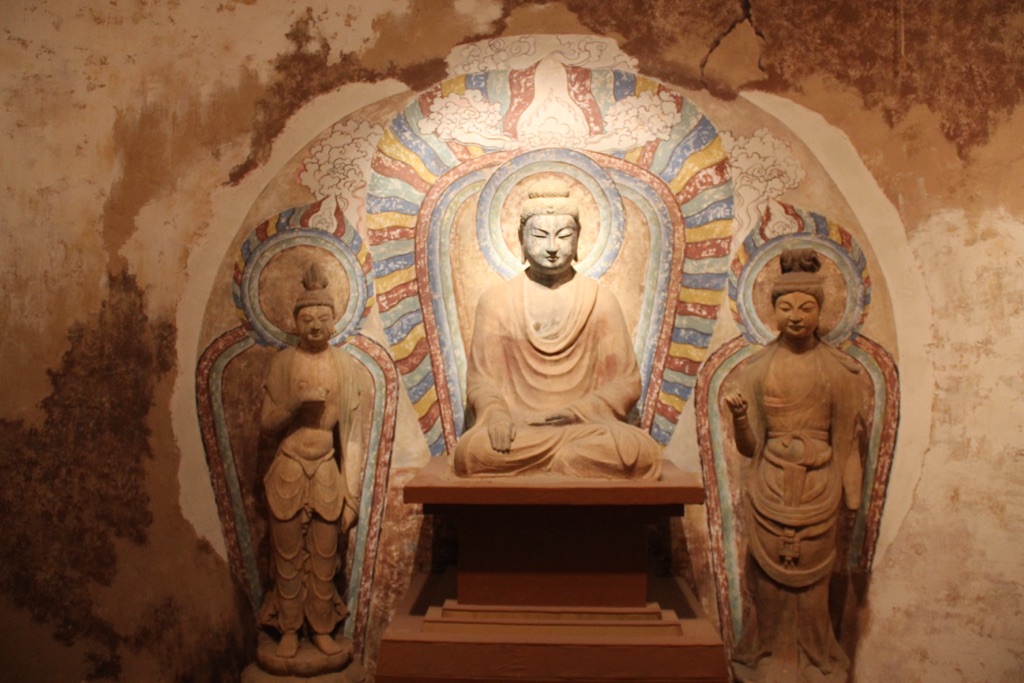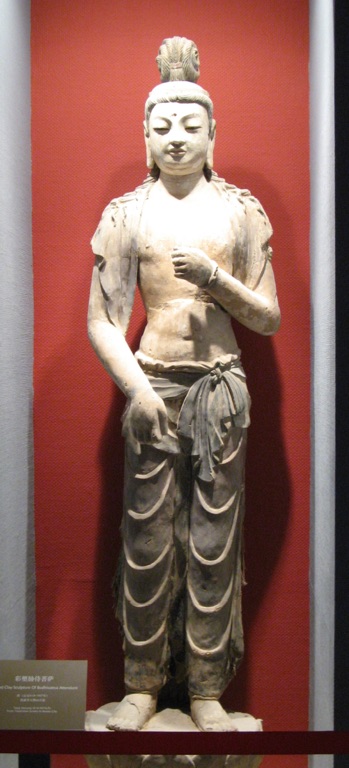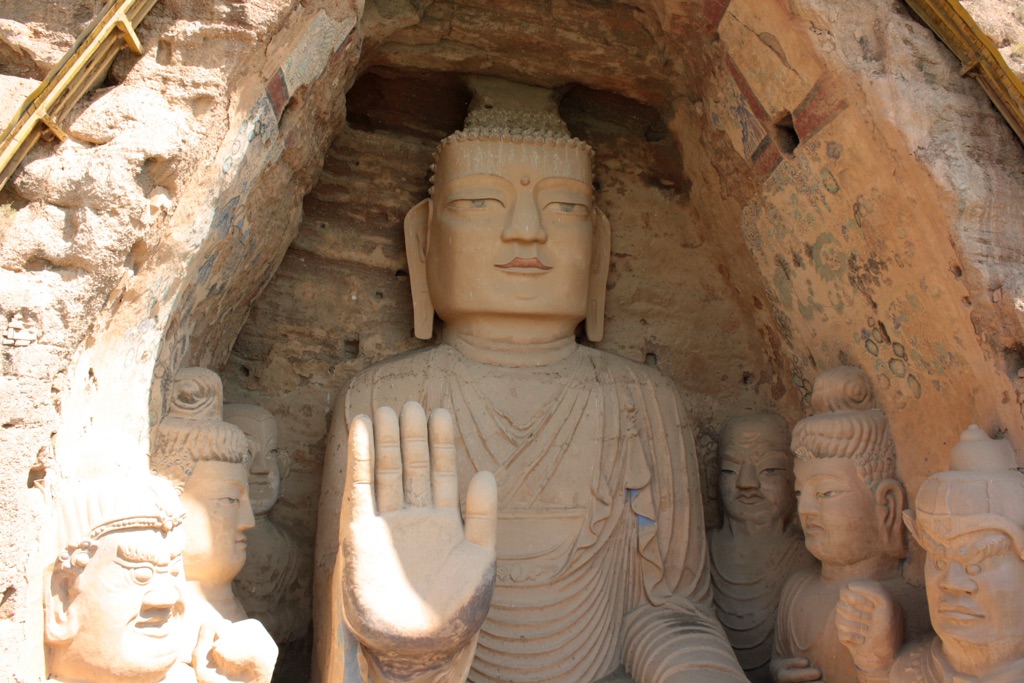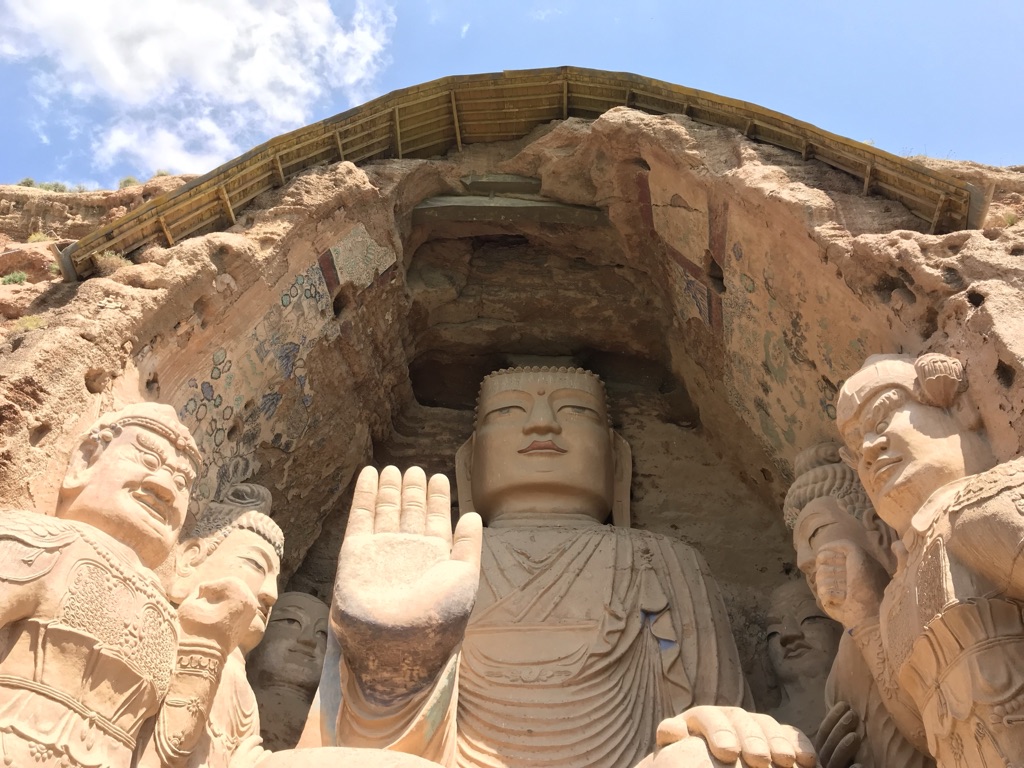The Tiantishan Caves, also known as the Grottoes of the Heavenly Ladder, are a series of ancient Buddhist cave temples. They are located in Gansu Province, China. These caves are a testament to the religious and cultural exchanges along the Silk Road. They house a collection of Buddhist art dating from the 4th to the 6th centuries. The caves are carved into a cliff face, showcasing a blend of Indian and Chinese artistic influences. They are an important part of China’s rich historical tapestry.
Get your dose of History via Email
Historical Background of Tiantishan Caves
The Tiantishan Caves were discovered in the early 20th century. They were found by a Taoist monk named Wang Yuanlu. He stumbled upon them while clearing sand from the caves. The caves were created during the Northern Liang Dynasty and then continued into the Northern Wei Dynasty and later dynasties. This was a period of great Buddhist activity in China. The Northern Wei rulers patronized Buddhism. They saw it as a means to unify their diverse empire.
Local craftsmen and artists built the caves. They were likely supported by wealthy donors and the imperial court. Over time, the caves became a significant spiritual center. They attracted monks and pilgrims from far and wide. The caves also served as a place of refuge during times of unrest. They witnessed the ebb and flow of dynastic changes over the centuries.
While the Tiantishan Caves are not as well-known as the Mogao Caves, they are historically significant. They provide insights into early Buddhist art in China. The caves have suffered from natural erosion and human damage. Yet, they remain a valuable cultural heritage site. They offer a glimpse into the religious life of ancient China.
The caves were once part of a larger complex. This included a towering pagoda that no longer exists. The pagoda was said to have been visible from miles away. It served as a beacon for travelers on the Silk Road. The Tiantishan Caves have not been the scene of any major historical events. However, their existence reflects the historical importance of Buddhism in China.
Today, the Tiantishan Caves are a protected site. They are recognized for their historical and cultural value. Efforts are underway to preserve what remains of the intricate carvings and statues. These efforts ensure that future generations can appreciate this link to China’s Buddhist past.

About Tiantishan Caves
The Tiantishan Caves are a series of man-made grottoes. They are hewn into the side of a sandstone cliff. The caves are renowned for their Buddhist statuary and frescoes. These reflect a fusion of Indian and Chinese art styles. The caves are a physical manifestation of cultural exchange along the Silk Road.
The construction of the caves was an arduous process. It involved carving into the hard rock face. The builders used simple tools like chisels and hammers. The caves vary in size and complexity. Some are small and simple, while others are large and elaborate, with multiple chambers.
Architectural highlights include the main cave, which features a colossal seated Buddha. This statue is surrounded by smaller figures of disciples and bodhisattvas. The walls of the caves are adorned with murals. These depict scenes from the Buddha’s life and various Buddhist deities.
The building materials for the Tiantishan Caves were primarily the natural sandstone of the cliff. This provided a relatively soft medium for the artists to work with. However, it also means that the caves are susceptible to erosion. The dry climate of the region has helped preserve the caves and their artwork to some extent.
Despite the challenges of preservation, the Tiantishan Caves remain an important site. They offer insights into the evolution of Buddhist art in China. The caves are a testament to the skill and devotion of the craftsmen who created them. They are a bridge between the past and present, connecting us to the spiritual aspirations of ancient peoples.

Theories and Interpretations
Several theories exist about the use and significance of the Tiantishan Caves. Some scholars suggest that the caves were a monastic complex. They provided a secluded environment for meditation and study. Others believe the caves were a pilgrimage site. They attracted devotees from across the Silk Road.
The mysteries of the Tiantishan Caves include the exact reasons for their decline. The caves fell into disuse and were eventually abandoned. Some attribute this to the shifting political and religious landscape. Others point to natural disasters that may have made the site less accessible.
Interpreting the artwork within the caves requires matching it to historical records. This is a complex task. The blending of artistic styles complicates efforts to pinpoint exact dates or influences. However, the iconography and motifs provide clues to the caves’ origins and the beliefs of their creators.
Dating the Tiantishan Caves has been carried out using stylistic analysis. This compares the art with other known works from the period. Radiocarbon dating and other scientific methods have also been employed. These help to establish a more precise timeline for the creation and use of the caves.
The Tiantishan Caves continue to be a subject of study and debate. They offer a rich field for researchers interested in the spread of Buddhism. They also intrigue those studying the cultural interactions along the Silk Road. The caves are a puzzle, with each discovery adding a piece to the historical picture.

At a glance
- Country: China
- Civilization: Northern Liang Dynasty
- Age: 4th to 6th centuries AD
Conclusion and Sources
- Wikipedia – https://en.wikipedia.org/wiki/Tiantishan_Caves

